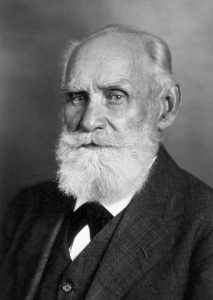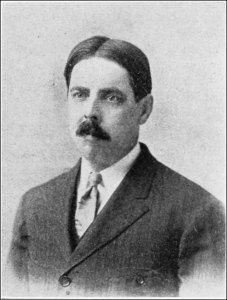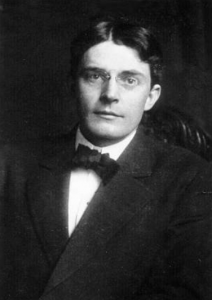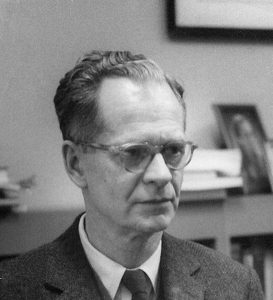2.2 Behaviourism and Applied Behaviour Analysis
The use of behaviourist strategies that tend to be ‘hierarchical’ in nature are successful for most of the students most of the time (Nash, Schlosser, & Scarr, 2016, p. 168). Students whose behaviour is serious, disruptive and ongoing require individualised more intensive strategies of intervention. However, there is an additional layer that needs to be considered and that is the child with trauma. For the child with trauma who demonstrates difficult and challenging behaviour (and not all do), a combination of strategies from a behavioural and psychological perspective will help us to better understand them and provide the support they need, the best we can.
From a behavioural perspective, we start with the theoretical foundation of behaviour theory. From behaviour theory arose applied behaviour analysis (ABA) which is behaviour theory applied to the ‘real world’ context. ABA manifested in schools looks like the processes and procedures of Positive Behaviour Support (PBS) which when then implemented at a whole school level is called School-wide Positive Behaviour Support (SWPBS) or as is the case in many Australian schools, Positive Behaviour for Learning (PBL). Our focus is on behaviour theory and the behaviourist strategies associated with managing individuals challenging behaviour at the most intense end of the continuum when we think about challenging behaviour from least disruptive (for example constant pencil tapping) to most disruptive (for example aggressive and unsafe). Used together with the knowledge from the psychological perspective (for example attachment and trauma theory), we will have a deeper, more comprehensive approach to understanding and supporting children with trauma. We will now turn our attention to a detailed exploration of positive behaviour support and its theoretical foundation of behaviourism and applied behaviour analysis.
Behaviourism: A snapshot of history
Pavlov (Ivan Petrovich Pavlov, born in Russia in 1849)

Most people have heard of Pavlov and his dogs. Pavlov observed that when a bell was rung at the same time that the dogs were being fed even if there was no food present, the dogs would salivate. As a result of his experimentation, classical conditioning (sometimes called respondent conditioning) was born. Classical conditioning is when an unconditioned stimulus gets a response. Food is the unconditioned stimulus; the bell is the conditioned stimulus.
While this type of conditioning is not as common as operant conditioning (see Skinner), it is most likely demonstrated by children who have experienced trauma. They react with reflexive behaviour. For example, an unconditioned stimulus (threat of harm) and an unconditioned response (fight, flight or freeze) with a neutral stimulus (such as a person, activity or smell). A child may behave disruptively upon smelling perfume because that perfume was worn by the person who physically harmed the child. It appears to be an extreme reaction to a ‘normal’ situation. This concept (flight, fight or freeze response) will be fully explored throughout the book.
Thorndike (Edward Lee Thorndike born in America 1874)

Thorndike studied cats not dogs as Pavlov did. He is famous for crafting two laws. The first being the Law of Effect (Thorndike, 1905 as cited in Alberto & Troutman, 2013, p. 18) which describes positive reinforcement. That is, when behaviour produces a positive outcome and as a result this behaviour is strengthened and more likely to occur again. The second law was called the Law of Exercise. This was similar to the stimulus/response of Pavlov where a behaviour and the situation are linked.
Watson (John Broadus Watson, born America 1878)

The term behaviourism is attributed to Watson. Watson advocated that the only real data (in psychology because he was a psychologist) was that acquired through direct observation. Watson and his colleague Raynor are well-known for their ‘Little Albert’ experiment where they conditioned baby Albert (11 months old and raised in a hospital) to be fearful of a white rat. It seems that unlike other experiments that baby Albert was never ‘desensitised’ of his fear and it was never known if his fear persisted. He died at age six from hydrocephalus.
Skinner (Burrhus Frederic Skinner, born in America in 1904)

BF Skinner is known for operant conditioning a key concept in applied behaviour analysis and our ability to think about the function or the purpose of behaviour. For students demonstrating challenging behaviour, this means working out “What’s in it for the kid?” Skinner worked with rats and pigeons and he discovered that there was a difference between classical conditioning (Pavlov’s idea that behaviours are a reflex) and operant conditioning (that behaviours are voluntary and concerned with consequences). The notion of the relationship between the behaviour and the consequence of that behaviour and how the consequence affects the likelihood that a behaviour will occur again, Skinner called a contingency. Behaviour can be reinforced was another key concept of Skinner’s. Reinforced means strengthened or increased. Skinner maintained that it was irresponsible not to use scientific control to shape humanbehaviour. He was a major influence behind the adaptation of experimental and clinical behaviour modification techniques to classroom settings. Behaviour modification applied to the classroom settings is known as applied behaviour analysis.
![]()
Use a Learning Theory: Behaviourism [3 min 24 sec]
Applied Behaviour Analysis (ABA)
Up until the 1960s most behavioural research was conducted in laboratories with animals as the subjects of experiments (Landrum & McDuffie, 2008). Recognition of the possibility and value of the application of behavioural theory to problems being experienced by real people in real contexts, led to the emergence of applied behaviour analysis (ABA) (Baer, Wolf, & Risley, 1968; Landrum & McDuffie, 2008; Simonsen & Sugai, 2009). Baer, Wolf and Risley (1968) note that ABA scrutinises behaviour through observation and measurement to determine what environmental factors are maintaining the problem behaviour. The authors identified the key elements of ABA in the inaugural volume of the Journal of Applied Behavior Analysis. These are: applied, behavioural, analytic, technological, conceptually systematic, effective and generality. These seven key elements mean that apart from being applied, behavioural and analytic, an ABA approach to investigating behaviour is focussed upon clear descriptions, procedures, and the importance of behaviour change and the generalisation of behaviour to other settings that is ongoing (Baer, et al., 1968; Martella et al., 2012). The principles of ABA constitute the procedures and strategies used for behaviour intervention. These include direct observation of the behaviour in the setting in which it is occurring, collection and analysis of data, and identification of possible reinforcement subject to the demonstration of socially appropriate behaviour (Baer et al., 1968). ABA is about understanding and improving behaviour (Cooper et al., 2014).
References
Alberto, P. A., & Troutman, A. C. (2013). Applied behaviour analysis for teachers (9th ed.). Upper Saddle River, NJ: Pearson Education.
Baer, D. M., Wolf, M. M., & Risley, T. R. (1968). Some current dimensions of applied behavior analysis. Journal of Applied Behavior Analysis, 1, 91-97. doi:10.1901/jaba1968.1-91.
Cooper, J. O., Heron, T. E., & Heward, W. L. (2014). Applied behavior analysis (2nd ed.). Essex, England: Pearson Education.
Landrum, T. J., & McDuffie, K. A. (2008). ‘Behavioral’. In T. L. Good (Ed.), 21st Century education: A reference handbook (Vol. 1, pp. 161-167). Thousand Oaks, CA: Sage Publications.
Martella, R. C., Nelson, J. R., Marchand-Martella, N. E., & O’Reilly, M. (2012). Comprehensive behavior management: Individualized classroom and schoolwide approaches (2nd ed.). Thousand Oaks, CA: Sage Publications.
Nash, P., Schlosser, A., & Scarr, T. (2016). Teachers’ perceptions of disruptive behaviour in schools: a psychological perspective. Emotional and Behavioural Difficulties, 21(2), doi: 10.1080/13632752.2015.1054670.
Simonsen, B., & Sugai, G. (2009). School-wide positive behavior support: A systems-level application of behavioral principles. In A. Akin-Little, S. G. Little, M. A. Bray & T. J. Kehle (Eds.), Behavioral interventions in schools: Evidence-based positive strategies. (pp. 125-140). Washington, DC: American Psychological Association.

